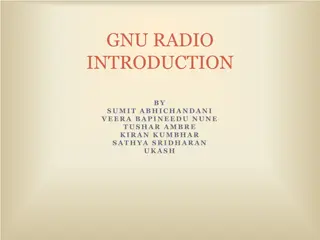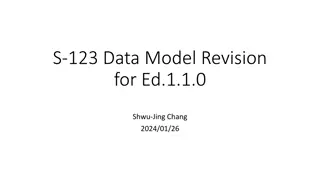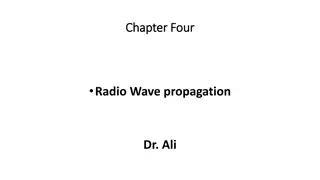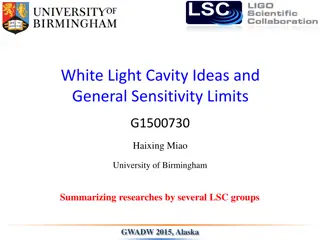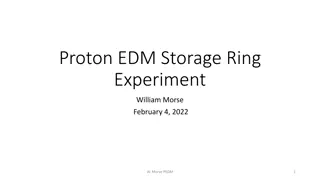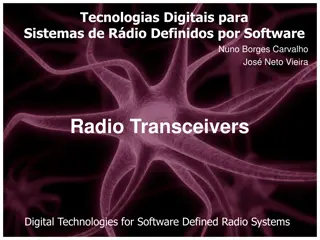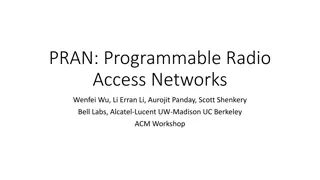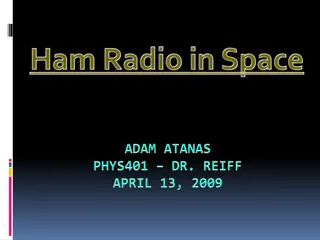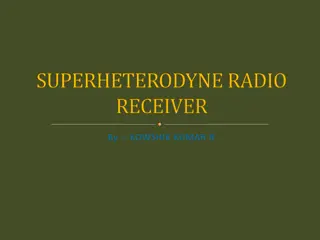
Estimating Sensitivity of DM Radio Experiment
This research discusses the estimation of sensitivity for the DM Radio Experiment, focusing on the circuit model, axion signal quantification, statistical noise sources, and tuning for dark matter signal detection. Various components such as the solenoidal pickup inductor, tunable capacitor, and SQUID current readout are analyzed in detail to understand the axion voltage signal and noise sources. The study delves into statistical noise sources, receiver circuit noise, and strategies for optimizing sensitivity in detecting dark matter signals.
Download Presentation

Please find below an Image/Link to download the presentation.
The content on the website is provided AS IS for your information and personal use only. It may not be sold, licensed, or shared on other websites without obtaining consent from the author. If you encounter any issues during the download, it is possible that the publisher has removed the file from their server.
You are allowed to download the files provided on this website for personal or commercial use, subject to the condition that they are used lawfully. All files are the property of their respective owners.
The content on the website is provided AS IS for your information and personal use only. It may not be sold, licensed, or shared on other websites without obtaining consent from the author.
E N D
Presentation Transcript
Estimating the Sensitivity of the DM Radio Experiment Saptarshi Chaudhuri Princeton University August 13, 2020 1
Outline DM Radio circuit model Quantifying the axion signal Statistical noise and sensitivity bandwidth Scan strategy Estimated sensitivity and scaling relations 2
Circuit model for axion detection Solenoidal pickup inductor placed in sheath center hole Tunable capacitor C ax Iax Ires> > SQ > > Lsheath LPU LIN X X R SQUID current readout X X 3
Axion voltage signal quantified by coupled energy EMF from axion quantified by voltage ???in series with pickup For convenience, can parameterize in terms of coupled energy ?? |???|2= 4??? 2????? ?? depends on magnet field strength, volume, and alignment of pickup with drive fields Limited by conservation of energy to axion-supplied EM energy 4
Signal and noise voltage sources Solenoidal pickup inductor placed in sheath center hole Tunable capacitor C ax Iax Ires> > SQ > > Lsheath LPU LIN X X Vax R SQUID current readout X X 5
Two fundamental statistical noise sources C ax Ires > Iax > SQ > > Lsheath LPU LIN X X Vax R Vth Thermal + Vacuum Noise 6
Two fundamental statistical noise sources C ax Ires > Iax > SQ > > Lsheath LPU LIN X X Vax Readout Noise R Vth Thermal + Vacuum Noise 7
Noise in receiver circuit Current Response Resonator Line Shape Thermal + Vacuum Noise Readout Noise Frequency 8
Tuned to dark matter signal: max response Current Response Resonator Line Shape DM 1 Thermal + Vacuum Noise Readout Noise Frequency Resonator Bandwidth 9
Detuned DM signal: SNR the same! Current Response Resonator Line Shape DM 2 Thermal + Vacuum Noise Readout Noise Frequency Resonator Bandwidth SNR not degraded when readout subdominant to thermal noise 10
Scan rate enhancement from sensitivity BW Current Response Resonator Line Shape Thermal + Vacuum Noise Readout Noise Frequency Resonator Bandwidth 11 Sensitivity Bandwidth
Readout noise is just the tip of the iceberg Response Thermal + Vacuum Noise Readout: Imprecision Readout Noise Frequency Sensitivity BW Frequency Sensitivity BW 12
Increase coupling to lower imprecision noise V I > Response Readout C L R Readout: Imprecision Frequency Sensitivity BW 13
Backaction is exchanged for imprecision V I > Response Readout C L R Imprecision Frequency Sensitivity BW 14
Optimize coupling to maximize sensitivity BW V I > Response Readout C L R Imprecision Frequency Sensitivity BW 15
Combine ingredients to get sensitivity formula Energy coupled to pickup- depends on DM physics, as well as receiver parameters Optimized amplifier coupling function Quality factor Time allocation function (scan strategy) Resonator thermal occupation number Complicated! Invert to get limit on axion-photon coupling See Chaudhuri et al, Arxiv: 1803.01627, Section VI 16
Parametrizing coupled energy in the quasi- static limit From Biot-Savart, Axion-photon coupling Dark matter density ??= ????????0?1/32???? Geometry factor ~0.1 Spatially-integrated rms DC magnetic field Field volume Assumes quasi-static limit for pickup 17
Performance figure of merit Integration time 1/2?1/4???? ?1/4 1/4 1/4 1/4 ????0?5/6?1/4???? ?1/4 1/4 ?? 1 ??? ????,??? Physical temperature Amplifier noise temperature, normalized to photon SQL Assumes: Quasi-static limit for pickup (only for far-RHS expression) Optimized coupling to amplifier Physical temperature greater than amplifier noise temperature 18
50L Estimated Performance Parameters Parameter Estimated Value Informed By B0 0.68 T OPERA simulations (Sebastian Leder) V 48.12 L OPERA simulations (Sebastian), COMSOL simulations (Chiara) cPU 0.06 COMSOL simulations (Chiara) Q 940k (theoretical) HFSS simulations (Alex Droster), Resonator design code (Joe), upcoming dip probe campaign (Joe) T 20 mK ANSYS simulations (Maria) 100 Upcoming SQUID dip probe campaign (Cady) Integration time 2 years live time Kent 19
Projected Sensitivity Projected Sensitivity 20
Next steps Next 3-month plan Tying up loose ends, combining component simulations Simulations of other components: tuning system, transformers, readout Other statistical noise sources (mechanical, vibration) Experimental campaigns 21

